"Bank Respublika"nın reytinqi "stabil" proqnozla "B2" səviyyəsinə yüksəldildi
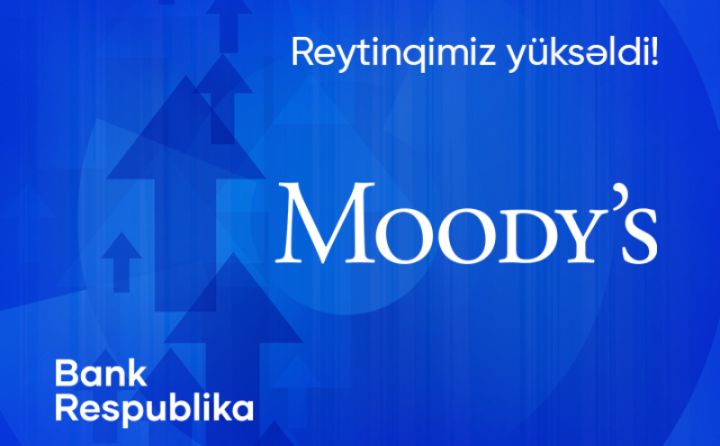 Moodys Beynəlxalq Reytinq Agentliyi "Bank Respublika"nın reytinqlərinə yenidən baxdıqdan sonra yerli və xarici valyutada olan bank depozitlərinin uzunmüddətli reytinqlərinin sabit proqnozla B3-dən B2-yə yüksəldiyini açıqlayıb.
Moodys Beynəlxalq Reytinq Agentliyi "Bank Respublika"nın reytinqlərinə yenidən baxdıqdan sonra yerli və xarici valyutada olan bank depozitlərinin uzunmüddətli reytinqlərinin sabit proqnozla B3-dən B2-yə yüksəldiyini açıqlayıb.
Bu barədə Marja-ya "Bank Respublika"dan bildirilib.
Məlumata görə, Moodys-in analitikləri qeyd edirlər ki, Bankın kredit reytinqinin (BCA) b3-dən b2-yə yüksəldilməsi, nəzərdən keçirilən dövr ərzində "Bank Respublika"nın aktivlərinin keyfiyyətinin yaxşılaşdırılması və gəlirliliyinin yüksəldilməsi istiqamətində uğurlu səylərini əks etdirir.
Agentliyinin hesabatında həmçinin qeyd olunub ki, reytinqlərin yüksəldilməsinə təsir edən mühüm amil bankın gəlirliliyinin yaxşılaşması olub. Belə ki, 2022-ci il ərzində Bank Respublika 24 milyon manat xalis mənfəət əldə edib ki, bu da 2021-ci ilin göstəricisini 165% üstələyir. 2022-ci ildə xalis gəlirin maddi aktivlərə nisbəti 1,6% təşkil edib. Moodys hesab edir ki, növbəti 12-18 ay ərzində Bank Respublika 2018-ci ildən bəri müsbət dinamikanın təsdiqi kimi sabit xalis gəlir əldə etməkdə davam edəcək.
Bank Respublika 1992-ci ildə yaradılıb və Azərbaycanın aparıcı beş bankından biridir. Bankın səhmdarları sırasında Almaniyanın ən böyük maliyyə qurumlarından biri olan - Sparkassen International Development Trust (Sparkassen-Finanzgruppe maliyyə qrupunun üzvü) var.
XXX
Moodys takes rating actions on 2 Azerbaijani banks
Moodys Investors Service ("Moodys") has today upgraded Joint Stock Commercial Bank Respublikas (Bank Respublika) long-term local and foreign currency bank deposit ratings to B2 from B3 and changed the outlook on these ratings to stable from positive. Concurrently, Moodys upgraded the banks Baseline Credit Assessment (BCA) and Adjusted BCA to b2 from b3. The upgrade of the banks long-term local and foreign currency Counterparty Risk Ratings (CRRs) to B1 from B2, and the upgrade of the long-term Counterparty Risk Assessment (CR Assessment) to B1(cr) from B2(cr) follows the BCA upgrade. At the same time, Moodys affirmed the banks NP short-term local and foreign currency bank deposit ratings and CRRs, and the NP(cr) short-term CR Assessments.
Concurrently, Moodys affirmed OJSC Bank of Bakus (BoB) B2 long-term local and foreign currency bank deposit ratings and changed the outlook on these ratings to positive from stable. At the same time, Moodys affirmed the banks b2 BCA and Adjusted BCA, NP short-term local and foreign currency bank deposit ratings, the banks B1/NP long-term and short-term local and foreign currency CRRs and the B1(cr)/NP(cr) long-term and short-term CR Assessments.
JOINT STOCK COMMERCIAL BANK RESPUBLIKA (BANK RESPUBLIKA)
The upgrade of the banks BCA and Adjusted BCA to b2 from b3 reflects its track record of improving asset quality and profitability through the cycle.
Despite operating in a volatile market of SME and unsecured consumer lending, Bank Respublika showed strong underwriting standards resulting in the problem loans to gross loans ratio decreasing to 1.6% as at the end of 2022 compared with a peak 7.1% as of the end of 2020. Despite very high asset growth (33% in 2022 and 59% in 2021) problem loans, defined as stage 3 loans grew by less than 5% in 2022. Coverage of stage 3 loans also remains strong at 135% as of the end of 2022 further supporting asset quality. Moodys however cautioned that the quality of the banks loan portfolio will need to be assessed as it seasons, following recent growth.
The banks asset growth was coupled with improvement in profitability. For the full year 2022 Bank Respublika reported AZN24 million net income, a 165% increase from 2021. This translated into net income to tangible assets ratio of 1.6% for the year 2022. Moodys expects that despite projected asset growth slowdown in the next 12-18 months, Bank Respublika will continue to post steady net income results following its track record of positive net income since 2018.
While Bank Respublikas capital position has been weakening in the last 3 years because of the high asset growth, Moodys does not expect Tangible Common Equity (TCE) to Risk Weighted Assets (RWA) ratio to deteriorate below 7% in the next 12-18 months (from 8% as of December 2022). As the period of high growth comes to an end, capital will remain a constraining factor for further expansion. Moodys says that it expects capital buffers to start to be replenished on the back of stable profitability.
Market funding reliance remains moderate for Bank Respublika with the share of wholesale funding standing at 21% of tangible assets as of the end of 2022. A sizable portion of this funding comes from the Government of Azerbaijan (Ba1 stable) and its national funds under economic development projects which give rise to lower refinancing risks than market borrowing. The bank remains primarily deposit funded with customer deposits representing around 73% of non-equity funding and remaining at almost the same level as the loan book.
The banks liquidity cushion has been depleted due to recent asset growth but remains at a comfortable level of 23% of tangible assets at the end of 2022. Liquidity is supported by relatively quick loan book turnover with more than a half of the book maturing in less than a year.
The stable outlook on Bank Respublikas long-term deposit ratings reflects Moodys expectations that asset quality will remain solid, while the banks stable profitability will support its capital position from further deterioration.
-- OJSC BANK OF BAKU (BoB)
The affirmation of the banks BCA and Adjusted BCA at b2 and the long-term bank deposit ratings at B2 reflects improved quality of the loan portfolio and profitability through the pandemic and lockdowns as well as expected improvement of the banks standalone credit profile in the next 12-18 months. The positive outlook on the banks long-term deposit ratings reflects Moodys expectation that the bank is well placed to ensure that these improvements are sustainable over the outlook period.
Over the past few years BoB has materially decreased the share of its problem loans thanks to recoveries and write-offs of its restructured legacy loan portfolio. As a result, the problem loan (PL) ratio declined to 2.6% as of year-end 2022 from 8% at the end of 2020. Meanwhile the PL coverage ratio remained strong at 92% at the end of 2022. Moodys estimates that BoBs problem loan ratio will not exceed 3-4% in the next 12-18 months amid a favorable economic environment, and ongoing rapid loan book expansion. In the rating agencys view, the overall asset risk remains elevated owing to unseasoned nature of its rapidly grown loan portfolio and the banks business model which is highly focused on unsecured consumer lending.
In 2022, BoB reported net income of AZN40.1 million, which translated into a very strong return on tangible assets of 5.8% compared with 6.4% posted in 2021. This result was largely associated with strong growth of net interest income on its healthy loan book, to AZN64.9 million in 2022 up from AZN43.7 million in 2021. In addition, ongoing releases of loan loss reserves on its restructured loan portfolio amounted to AZN24.7 million in 2022 and contributed half of the banks pre-tax income. Moodys expects a significant reduction of provision release in the next 12-18 months, which should be balanced by strengthening recurring revenues. If achieved, this would translate into a strong return on tangible assets in 2023-2024 in Moodys central scenario.
Strong capital adequacy remains one of BoBs key credit strengths, providing a buffer against asset-quality weakness. At the end of 2022 BoB reported TCE/RWA ratio at 18.1% down from 21.2% at the end of 2021 following 47% loan book expansion last year. Moodys expects moderation of the loan book growth in the next 12-18 months given modest liquidity cushion and the banks paramount focus on funding costs. In Moodys central scenario TCE/RWA ratio will decline to 16%-17% by the end of 2024.
In recent years, BoB has steadily decreased its reliance on market funds to 19% of total assets at the end of 2022 from 23-24% in 2019-2020. The market funding is largely represented by a 5-year loan from the Central Bank of Azerbaijan due in 2024 and long-term loans from the national funds for entrepreneurship, mortgage, and agriculture support. Moodys considers these funding sources stable and subject to modest refinancing risk. Despite the stability of these funds, BoBs loan-to-deposit ratio remains high at 153% at the end of 2022. As of the same date the banks liquidity cushion was modest at 13% of total assets. The banks liquidity is supported by a well-diversified and granulated retail customer base which accounts for over 90% of total deposits. Moodys estimates liquid assets at 16% of total assets as of mid-2023 based on local GAAP reports and expects it will remain within 15%-20% range in the next 12-18 months.
FACTORS THAT COULD LEAD TO AN UPGRADE OR DOWNGRADE OF THE RATINGS
Upward pressure on Bank Respublikas BCA could arise if the capital position improves significantly while asset quality and profitability trends remain positive. Further capital position erosion or reversing of asset quality trend could lead to a negative rating action on the banks ratings.
BoBs BCA and long-term bank deposit ratings could be upgraded if there is a significant improvement in the banks liquidity and funding profile while maintaining sound solvency.
The positive outlook on BoBs long-term bank deposit ratings could be changed to stable if the banks financial fundamentals, such as liquidity, asset quality or profitability, eroded.


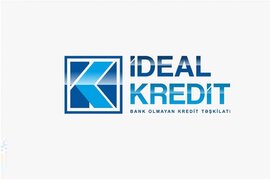

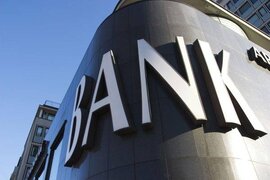



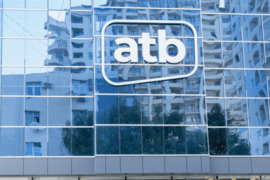
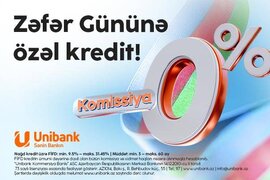
 Dünyanın ən çox maaş verən şirkətləri
Dünyanın ən çox maaş verən şirkətləri Start-up nədir?
Start-up nədir? Neft bahalaşıb
Neft bahalaşıb Qızılın qiyməti yüksəldi
Qızılın qiyməti yüksəldi Fed rəsmisi: "Süni intellekt məşğulluq və qiymətlərə təsir göstərə bilər"
Fed rəsmisi: "Süni intellekt məşğulluq və qiymətlərə təsir göstərə bilər" "Federal hökumətin bağlanması iqtisadiyyata böyük zərər vurdu"
"Federal hökumətin bağlanması iqtisadiyyata böyük zərər vurdu" Gürcüstan Azərbaycana içki satışından qazancını 2 dəfə artırıb
Gürcüstan Azərbaycana içki satışından qazancını 2 dəfə artırıb 252 milyon dollar dəyərində dənli bitkilər idxal edilib
252 milyon dollar dəyərində dənli bitkilər idxal edilib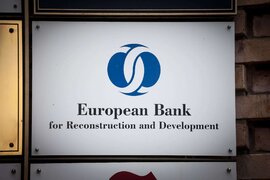 Avropa bankının birinci vitse prezidenti Türkiyəyə səfər edəcək
Avropa bankının birinci vitse prezidenti Türkiyəyə səfər edəcək Bayram günlərində bu banklar və "exchange"lər işləyəcəklər
Bayram günlərində bu banklar və "exchange"lər işləyəcəklər İban nədir?
İban nədir? "iPhone 15" modelinin üstünlükləri
"iPhone 15" modelinin üstünlükləri Hazır bizneslərdə ən çox edilən 5 səhv
Hazır bizneslərdə ən çox edilən 5 səhv İnvestisiyanın necə cəlb etmək olar?
İnvestisiyanın necə cəlb etmək olar? Bill Qeyts kimdir?
Bill Qeyts kimdir?